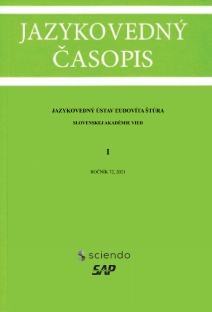Prečo slovo dcéra obsahuje dlhé é?
Why does the word dcéra (‘daughter’) contain a long é?
Author(s): Siniša HabijanecSubject(s): Language and Literature Studies, Theoretical Linguistics, Historical Linguistics, Comparative Linguistics, Western Slavic Languages
Published by: SAV - Slovenská akadémia vied - Jazykovedný ústav Ľudovíta Štúra Slovenskej akadémie vied
Keywords: Slovak language; Czech language; Slovak historical phonology;
Summary/Abstract: The paper aims to explain the origin of the long é in the Slovak word dcéra ‘daughter’, which is the only word of the original lexical layer that has a long é in its root. Its length is difficult to explain by comparative Slavic accentology since relevant languages generally show a short vowel in this position. Another peculiarity of this word is the fact that é did not undergo the Central Slovak diphthongization that otherwise regularly occurs after c. The author offers a solution in the cultural influence of Czech, which Slovaks had been using as a written language for centuries. It is argued that the original Common Slavic word *dъťi had been lost in Slovak and replaced by a word *děvъka, while dcera was introduced into the Slovak vernacular through Czech religious texts. The initial Czech graphic cluster dc- had been realized as a geminated [cː] by Slovak priests, the pronunciation of which was interpreted as compensatory lengthening of the following vowel, and this length was subsequently phonologized. The lengthening of e and consequent phonologization could be linked to the spread of Czech printed books, so it must be posterior to the Central Slovak diphthongization.
Journal: Jazykovedný časopis
- Issue Year: 72/2021
- Issue No: 1
- Page Range: 298-307
- Page Count: 10
- Language: Slovak

